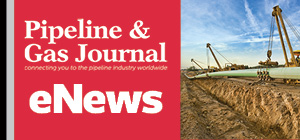Safety Board: Damage During Installation Led to Pipeline Crack
AMHERST, S.D. (AP) – The National Transportation Safety Board (NTSB) says a fatigue crack caused last year’s rupture of the Keystone oil pipeline in South Dakota

The NTSB said in a report released Thursday that the crack likely originated from mechanical damage to the pipe exterior caused by a metal-tracked vehicle during installation. Investigators say the crack grew to a "critical size" and resulted in the Nov. 16 rupture near Amherst.
An estimated 210,000 gallons of oil spilled from the TransCanada Corp. pipeline between the Ludden, N.D., and Ferney, S.D., pump stations. There were no injuries associated with the incident.
TransCanada spokesman Matthew John says the impacted property has been cleaned up and the pipeline has returned to service. John says the company is committed to achieving its goal of "zero incidents."
Related News
Related News

- Kinder Morgan Proposes 290-Mile Gas Pipeline Expansion Spanning Three States
- Valero Plans to Shut California Refinery, Takes $1.1 Billion Hit
- Three Killed, Two Injured in Accident at LNG Construction Site in Texas
- Tallgrass to Build New Permian-to-Rockies Pipeline, Targets 2028 Startup with 2.4 Bcf Capacity
- TC Energy Approves $900 Million Northwoods Pipeline Expansion for U.S. Midwest
- U.S. Pipeline Expansion to Add 99 Bcf/d, Mostly for LNG Export, Report Finds
- Enbridge Adds Turboexpanders at Pipeline Sites to Power Data Centers in Canada, Pennsylvania
- Great Basin Gas Expansion Draws Strong Shipper Demand in Northern Nevada
- Cheniere Seeks FERC Approval to Expand Sabine Pass LNG Facility
- Heath Consultants Exits Locate Business to Expand Methane Leak Detection Portfolio




Comments